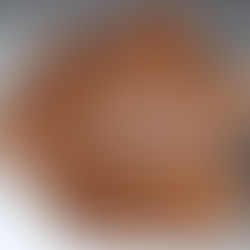American Hop Hornbeam Burl
The American hop hornbeam tree has very hard and dense wood. It is frequently called iron wood but that name is shared by other species. The tree has fruit that resembles hops and the wood has been used to make tool handles and yoke beams for oxen, hence the name hop hornbeam. I obtained a burl of hop hornbeam from the UP of Michigan.


The burl wrapped almost half way around the log. The log was about 7" in diameter. The burl also had a branch protruding out of it. It is always challenging to decide the best way to turn a bowl from such a burl. I decided to cut the burl perpendicular to the axis of the log into two similar sized pieces. This provided blanks for two end-grain turned bowls. Each bowl will show the cross sections of the burl and log. The next image shows the two cross sectional pieces from this cut.

The wood has very nice colors and patterns. The burl areas contain radial dark lines and a reddish-brown zone that extends into the center of the log with an interesting tail. The cross sectional shape is also beautiful. I mounted the piece shown to the right on my lathe. This is shown in tail-stock and side views in the next two images. The burl was attached to the head-stock of the lathe using a 2.5" Elio drive, and secured with a live center in the tail-stock.


This piece was turned into the bowl shown below. The bowl is still attached to the lathe with a chuck. The images below show the top and side views (The bowl is about 12" in diameter and 5" high). This bowl will have to dry (it was turned green) for several months and be re-turned around the bottom (to reshape the warped base), sanded, and oiled. My experience with previous hop hornbeam burls warns me to anticipate some checking along the dark lines. I minimize this by drying slowly in a humid environment and checking for cracks every day for at least several weeks. If a crack starts, it can usually be stopped with CA glue. I will add images of the finished bowl to this blog post in several months!


The following gallery of images shows the turning of the other half of the burl, the one shown to the left in the image above of the two cross sectional pieces.































